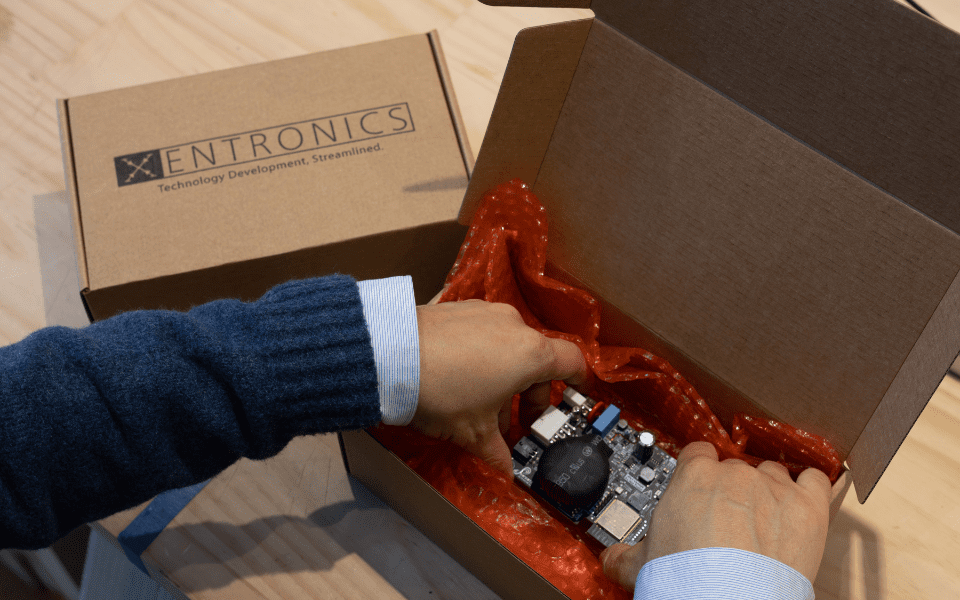Project management is a key pillar of Xentronics’ commitment to better collaboration. We ensure all projects have a dedicated project manager who is not directly involved in the delivery of technical outputs and acts as your advocate. They collaborate closely with our client’s project lead, as well as users, suppliers, partners, and other project stakeholders to ensure to a smooth and enjoyable project experience for all.
Project management for electronic product development involves the coordination of several specialist technical disciplines to manage cost and time constraints in line with stakeholder expectations. Below are just some of the key tasks that relate to project management, which we complete consistently.
Confirm that all project outcomes meet agreed specifications and client expectations before formal handover. This includes reviewing design documentation, testing evidence, and compliance records.
Establish clear procedures for transferring knowledge, documentation, and responsibilities to clients, end-users, or downstream teams. This avoids gaps and ensures continuity after project completion.
Conduct structured reviews to capture lessons learned, assess performance against scope, budget, and schedule, and identify areas for improvement in future projects.
Ensure all contracts, approvals, and acceptance criteria are finalised, with risks and outstanding issues documented and resolved where possible.

We apply best practices in project management to every product development – from the most simple PCB design project, to large programs. Depending on the size and context of the project there are a range of ways project management methods can be adapted and success factors that matter.


Project management is the biggest driver of delivering project on-time and on-budget, while reducing project uncertainty throughout all phases of the product life cycle. As a product developer, you need to play a leading role in making sure project management is valued for these reasons:
The project manager is responsible for ensuring that all communication flows smoothly between your internal team, developers/engineers, and any external stakeholders. They act as the anchor point so you always know where to go for clarity or updates.
By providing a single accountable contact, the project manager makes sure that goals, timelines, and deliverables are clearly defined and understood by everyone involved. This reduces the chance of confusion or conflicting instructions.
Having one main point of contact streamlines the decision process. The project manager ensures the right people are consulted, information is captured accurately, and decisions are actioned quickly to keep momentum.


Collaboration is both enabled and controlled through great project management. When collaboration can thrive, and all project stakeholders can give their own valuable input and perspective, the best and most successful outcomes are achieved. Here are some principles we advocate at Xentronics.


This is a common question, and it always depends on what the scope of the project management is.
When hiring external developers to design and build your product, you should always ensure they have a project manager themselves – otherwise, you will spend significant time managing them, holding them accountable, and monitoring their performance.
Project management costs depend on the size, complexity, and duration of the project. A general rule of thumb is 10% of the total engineering effort of the project, or, 3-4 hours per week for the entire duration of the project. As the amount of project management will scale and increase depending on the team size and complexity, it is not an overhead – rather, a necessary cost to ensure success, coordination, and on-time delivery of a project.
It’s critical that project managers have experience in the discipline they are managing, and enough knowledge to adequately understand the tasks of technical specialist they are leading. This ensures everyone is talking the same language, understands the roles, and risks can be identified as early as possible without requiring input from specialists every time. In product development, project managers should always be previous developers involved in bringing many successful projects to market. Experience can’t be beaten by theory.
Learn more about our other capabilities that support our product development services